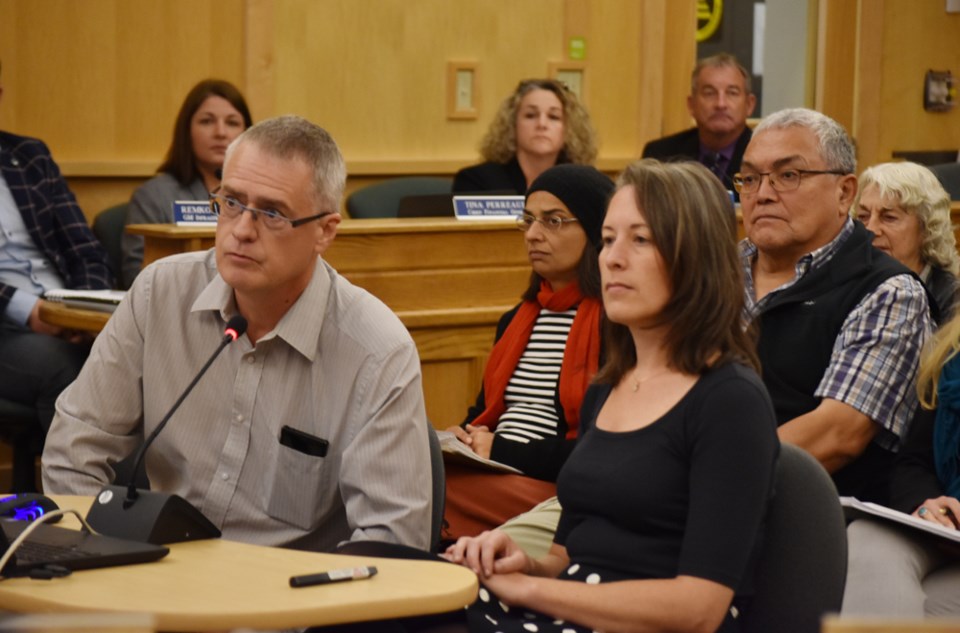Some of the lands slated to be handed over to shíshálh Nation as part of last year’s groundbreaking Foundation Agreement with the province could be transferred as early as next summer.
That was the tentative timeline provided by Jennifer Spencer, one of two negotiators for the Ministry of Indigenous Relations and Reconciliation (MIRR) who presented an update to Sunshine Coast Regional District (SCRD) directors on the land transfer process at a Sept. 19 infrastructure committee meeting.
The lands are expected to be transferred in two separate phases.
Shíshálh Nation and MIRR are working on the first phase, which includes the DL7613 and DL2725 “Gravel Lands,” both of which are in the jurisdiction of SCRD, north of Sechelt and connected to local government assets including the landfill, Chapman Creek Water Treatment Plant and water system infrastructure.
The lots are identified as Gravel Lands in the Foundation Agreement since they’re leased by Lehigh Hanson Materials.
“We’re working our hardest behind the scenes,” said Spencer, adding that summer 2020 is likely the earliest they would see the transfer of those district lots, calling it a “best-case scenario.”
As fee simple land, SCRD zoning rules would still apply, unless shíshálh Nation took steps to re-designate them as band lands, in which case federal rules would take effect.
Before diving into updates, Spencer acknowledged they heard the SCRD’s stated interests in “working collaboratively” with the province and Nation, and said they would be providing consistent answers on implementation updates so “we’re on the same page.”
Spencer then addressed concerns related to the first phase of the transfer. First, that the Sechelt landfill, which is excluded from the transfer, extends into DL 7613. “I don’t think it’s too serious in terms of consequences,” she said, suggesting that the land affected by the landfill wouldn’t be included in the transfer.
She also assured directors “there will be full access to all of the adjoining lands and the landfill” by roads traversing the land in question because those roads remain as “Crown corridors” owned and administered by the Ministry of Transportation.
A portion of DL 7613 covers the community watershed, and Spencer said discussions over future use and how to maintain water quality protections are underway and that possible solutions would be shared with the SCRD.
“One of the big topics of discussion,” according to Spencer, is the Chapman Creek Water Treatment Plant infrastructure, since it and related infrastructure and access points are located in DL 2725. She said a “legal instrument” would be agreed upon by the shíshálh Nation and the SCRD “to meet all needs and legal requirements.”
“It’s been very positive and I think we’ll find a solution that works for everyone,” she said.
Following the presentation, directors thanked the ministry for presenting in public, before launching into questions.
Sechelt director Darnelda Siegers asked about whether the discussions around the water treatment plant include plans for expansion, to which Spencer responded only current rights are being addressed, and any expansion discussions would be between shíshálh Nation and the SCRD, though she acknowledged the issue has been raised.
Roberts Creek director Andreas Tize asked whether the SCRD’s proposed water reservoir sites are located on the lands and whether it would “change the process of those getting underway.”
SCRD staff said the reservoir sites under consideration are located outside the lands, but some of the associated infrastructure “might need to cross a small corner of the lands.”
Near the end of the discussion, Gibsons director Bill Beamish asked whether there are any impacts on revenues from the lands that are to be transferred. Negotiator Heinz Dyck said, “I’m not sure what the regional district would actually be foregoing with respect to revenues. Potential revenues, perhaps; current revenues, I’m not sure if there is anything right now.”



